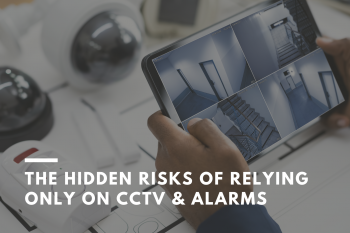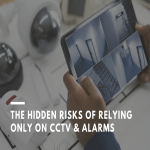VIP guard placement is essential for ensuring the safety and security of influential individuals. It
involves strategically positioning guards to balance visibility and discretion. Guards need to be
positioned in a way that deters potential threats while maintaining a respectful distance. The
placement should allow guards to respond quickly to any security threats without causing
unnecessary attention or disruption. This requires careful planning and consideration of the
location, the VIP's schedule, and potential security threats.
Importance of Balancing Visibility and Discretion
Finding the right balance between visibility and discretion is crucial in VIP guard placement.
Guards must be noticeable enough to deter potential threats and discreet sufficient to avoid
causing unnecessary attention or alarm. This delicate balance ensures that the VIP feels protected
without feeling overwhelmed by the security presence. Too much visibility may attract unwanted
attention, while too much discretion may compromise the VIP's safety. Achieving this balance
requires careful assessment of the specific situation and continuous adjustment as circumstances
evolve.
Factors to consider in VIP guard placement
VIP guard placement is a crucial aspect of ensuring the safety of a VIP. Some key factors to
consider are:
• Level of Threat: It is essential to analyze the specific threat level to the VIP and tailor the guard placement accordingly.
• Location and Setting: The environment in which the VIP will be present dictates the
positioning of guards to optimize visibility and discretion.
• Number of Guards: Assessing the number of guards required to provide adequate protection while not being overly conspicuous is crucial.
• Skills and Experience: The guards' expertise and experience handling different situations are vital to effective placement.
• Communication: The coordination and communication between guards are essential to balance visibility and discretion.
Assessing potential security risks and vulnerabilities
Assessing potential security risks and vulnerabilities is crucial for effective VIP guard placement. Identifying and understanding the threats that the VIP may face helps determine the security level required. This includes assessing the current security measures, analyzing past incidents, and considering the VIP's public visibility. Conducting a thorough evaluation is essential to ensure that the VIP's security needs are adequately met.
Techniques for maintaining a low profile while ensuring vigilance
One technique for maintaining a low profile while ensuring vigilance is blending in with the
environment. This means dressing in attire that is common in the area and avoiding any flashy
accessories or clothing that could draw attention. Another technique is maintaining a relaxed and unobtrusive posture, preventing unnecessary movements that may attract unwanted attention.
It is also essential to be highly observant and aware of the surroundings while subtly scanning
the area for potential threats or suspicious activity.
The art of strategic positioning and surveillance
Strategic positioning and surveillance are essential components of VIP guard placement. The guards must balance being visible enough to deter potential threats and discreet enough to avoid causing undue attention. This requires a keen understanding of the environment and the ability to adjust their positioning based on the movements of the VIP. The art lies in finding the optimal vantage points while remaining inconspicuous to the public.
Communication and coordination in VIP guard placement
Communication and coordination are essential in VIP guard placement to ensure the safety and security of the VIP. All team members must communicate constantly and coordinate their actions effectively to anticipate and respond to any potential security threats. Effective communication and coordination can significantly enhance the overall effectiveness of VIP guard placement and ensure the smooth execution of security protocols.
Training and preparation for VIP guard placement
Training and preparation for VIP guard placement involves rigorous physical and mental preparation. VIP guards must undergo specialized training to develop close quarters combat, defensive driving, and emergency medical care skills. Additionally, guards are trained in situational awareness and conflict resolution techniques to handle potential security threats effectively. The preparation also includes thorough background checks, including criminal and financial history, to ensure the utmost trustworthiness in the personnel selected for VIP guard placement.
Adapting to different environments and situations
VIP guards must be adaptable to various environments and situations, ensuring they can maintain high security while remaining discreet. Whether it's a crowded public event, a private gathering, or a corporate function, VIP guards must blend in and maintain a low profile while being vigilant and ready to respond to any security threats. This requires situational awareness, quick decision-making, and anticipating potential risks.
Maintaining Professionalism and Readiness in VIP guard placement
VIP guard placement requires high professionalism and readiness at all times. Guards
must be discreet while also being visible enough to deter potential threats. This delicate balance
ensures the safety and security of the VIP without drawing unnecessary attention. Guards should
always be prepared to act swiftly and decisively, maintaining a vigilant and
composed demeanor.












